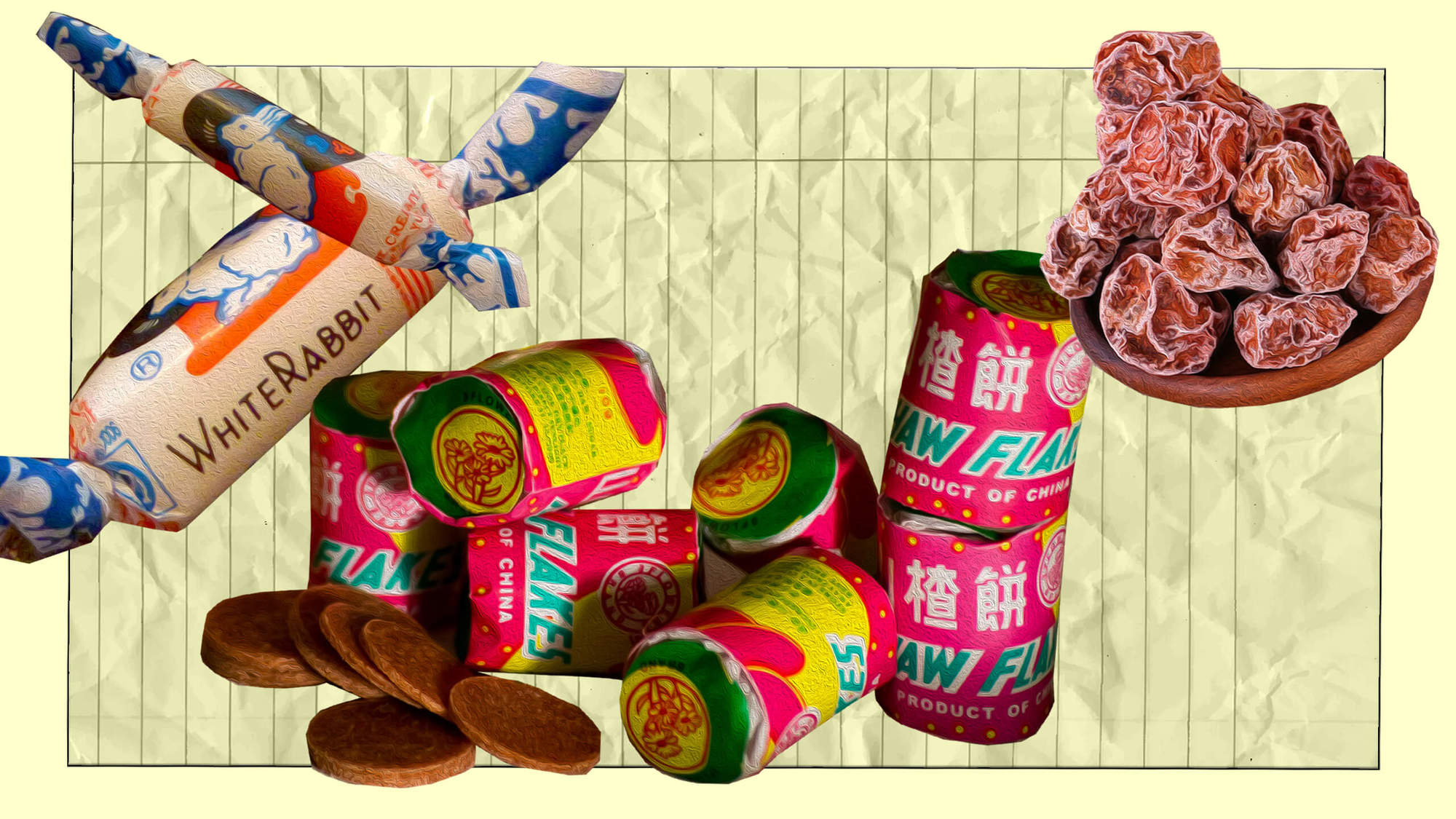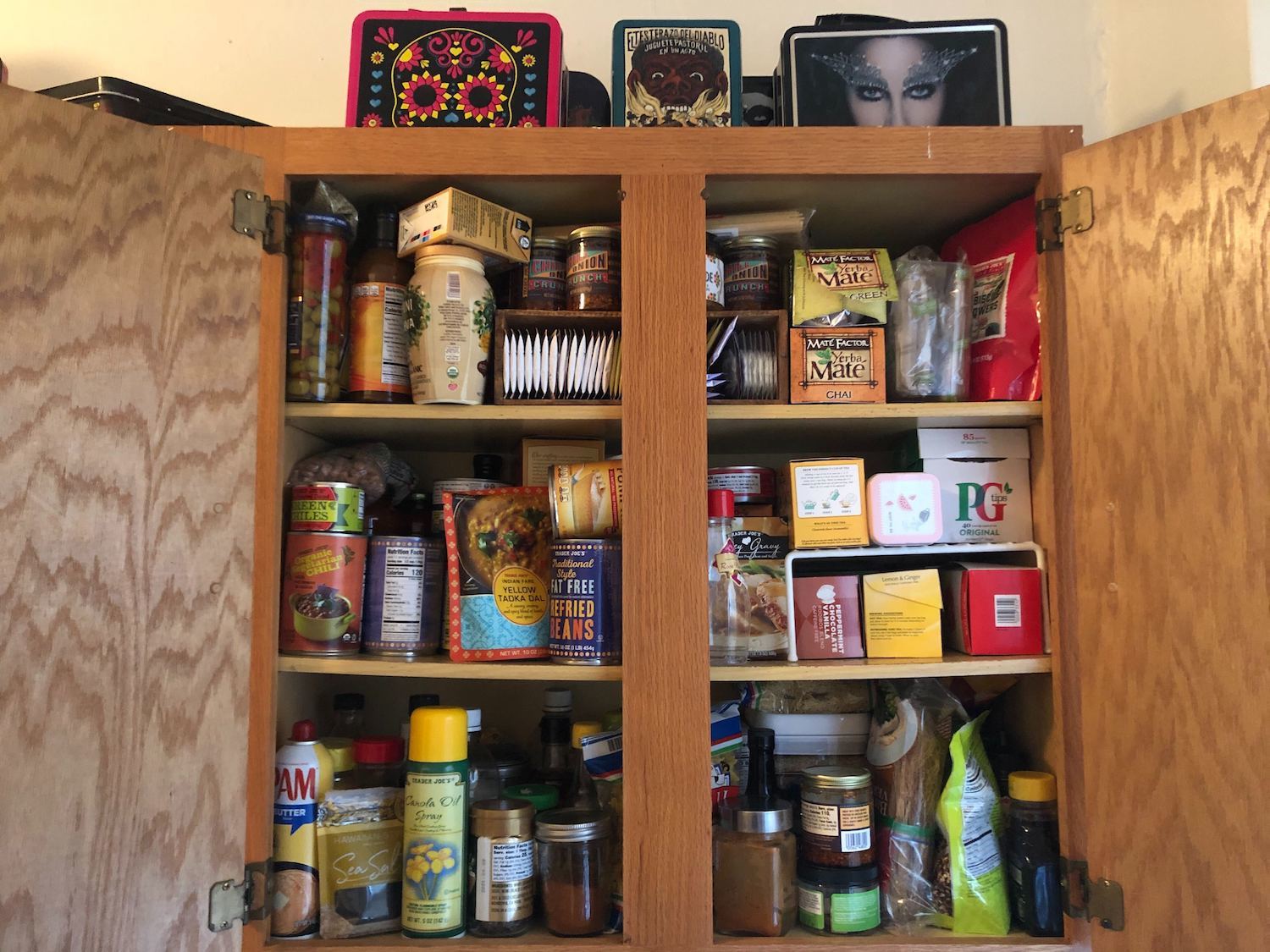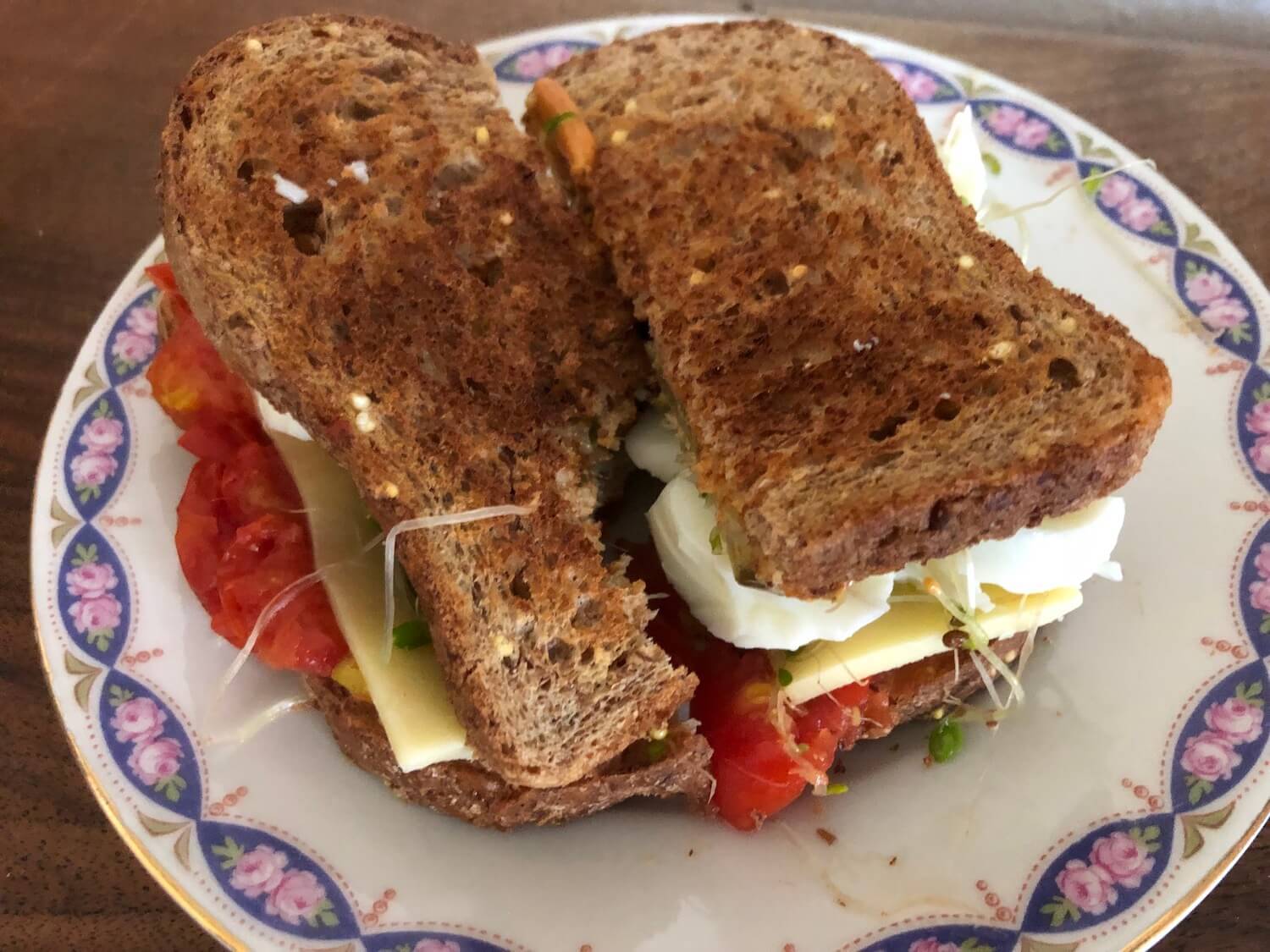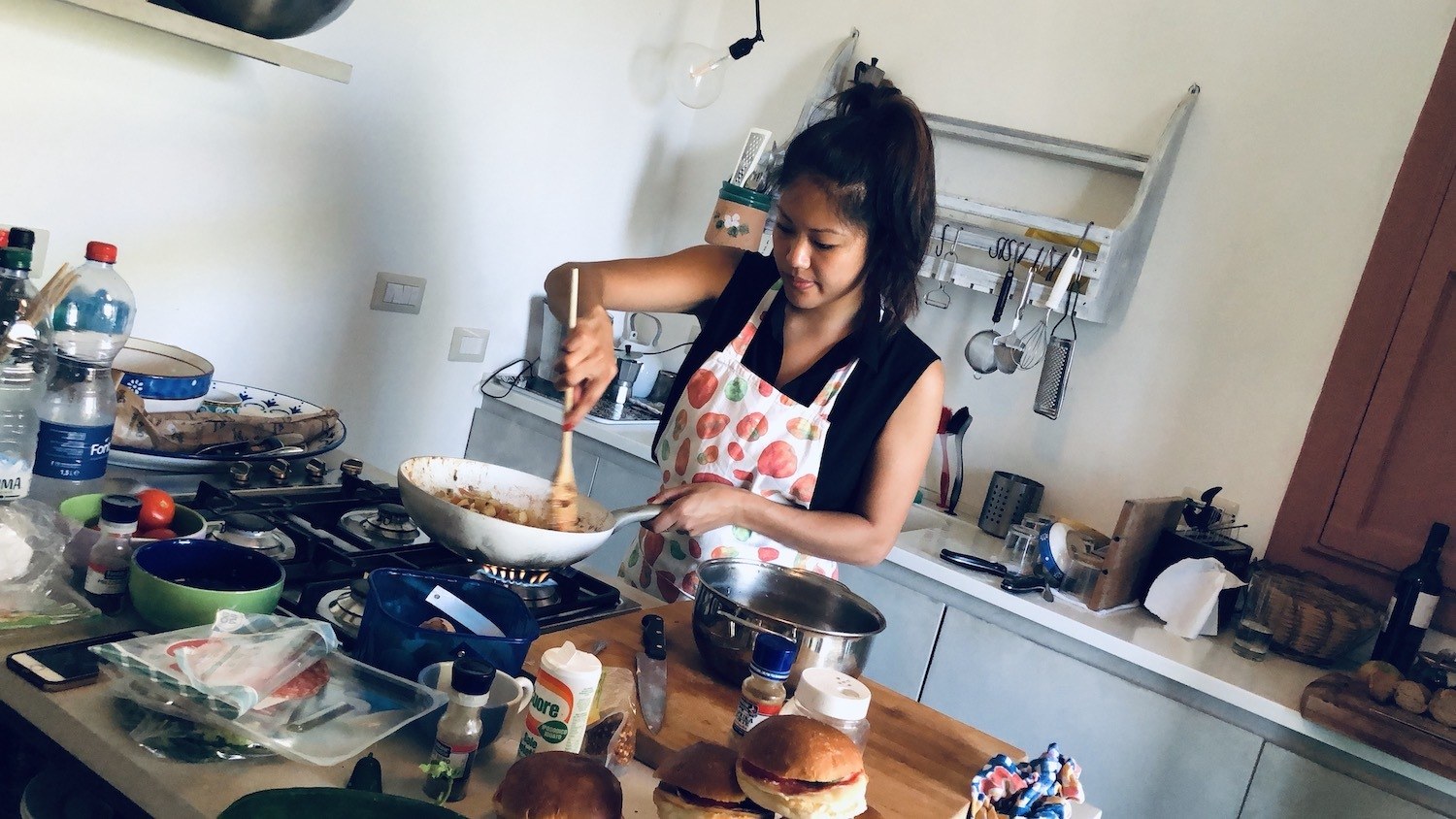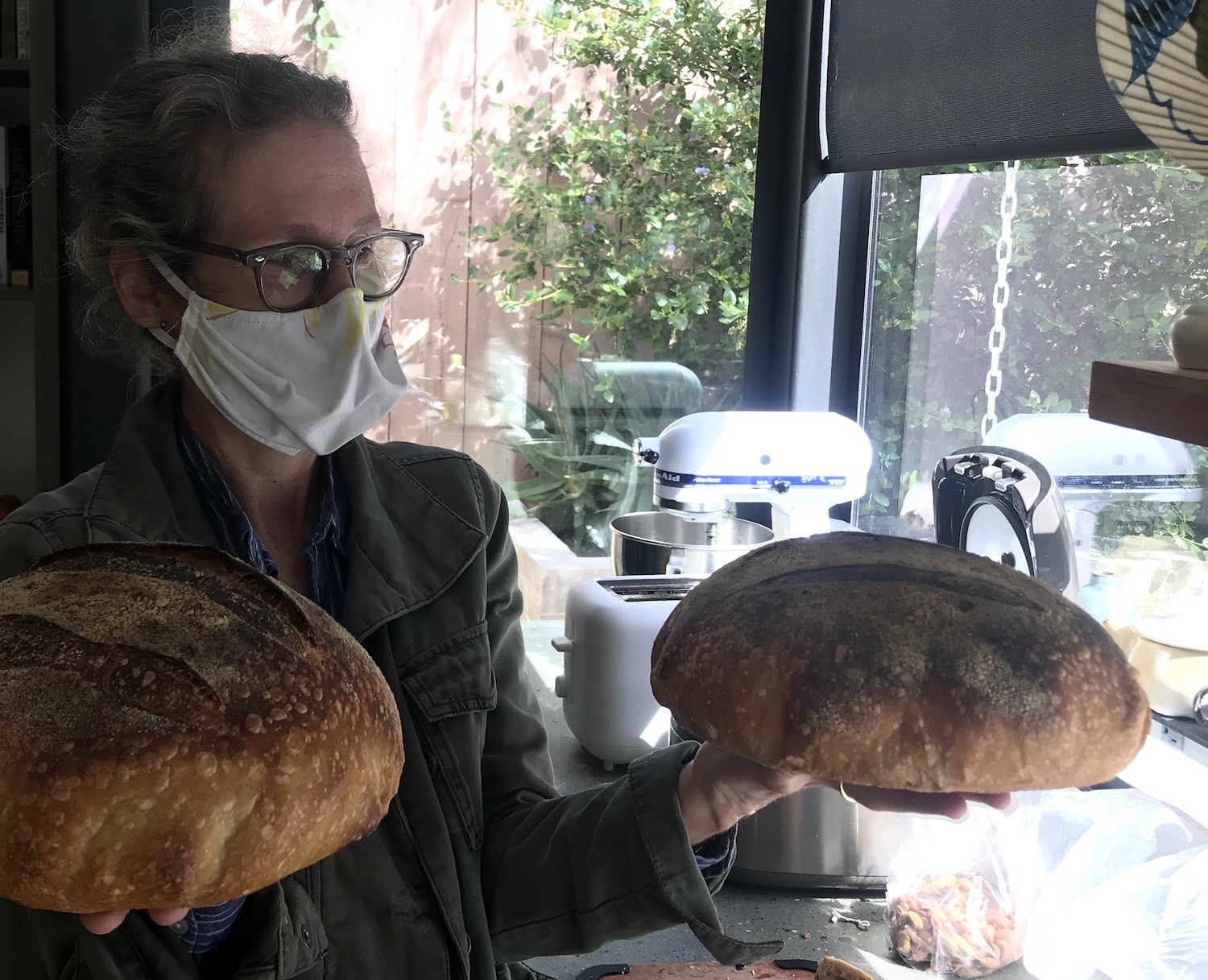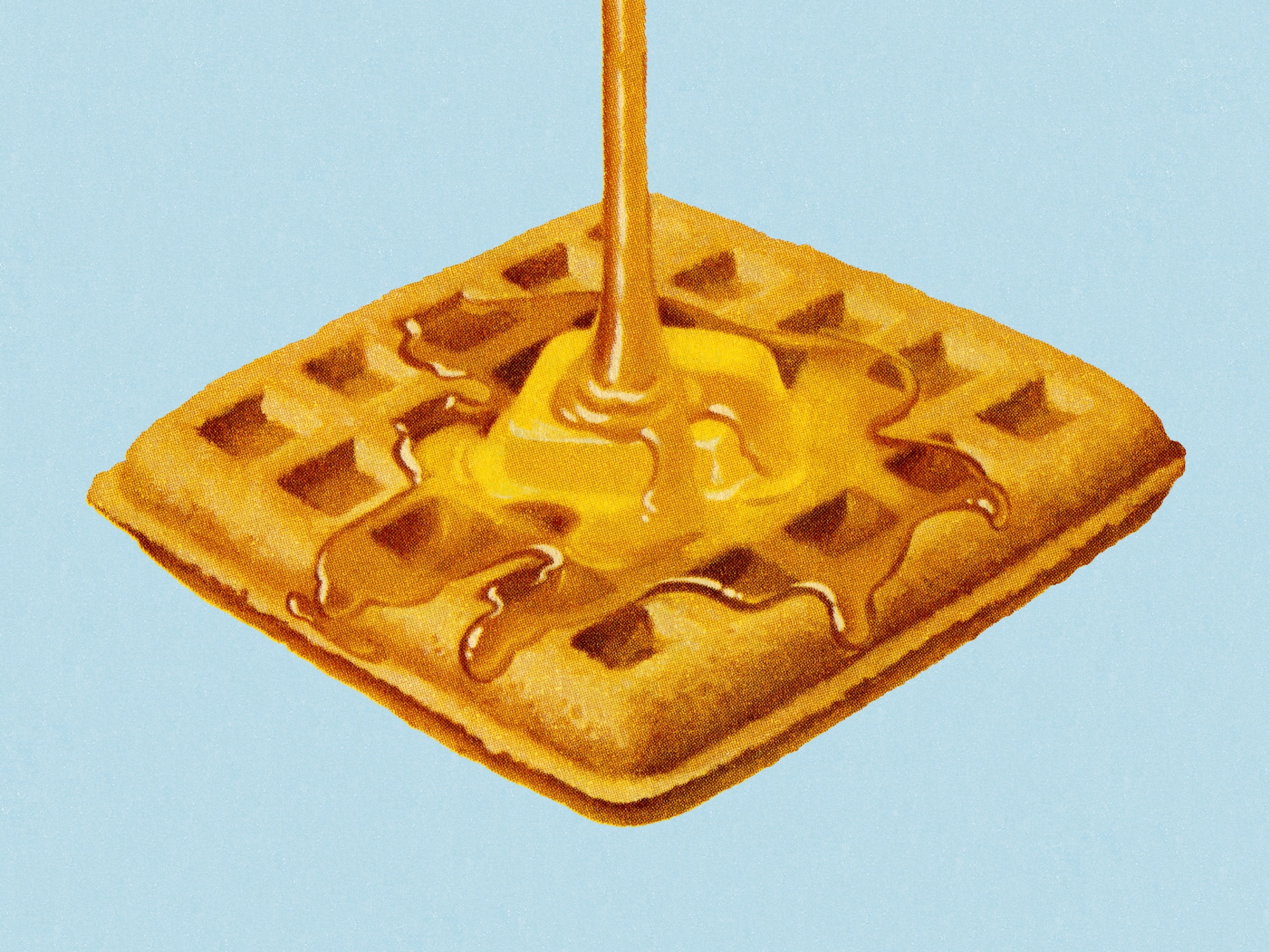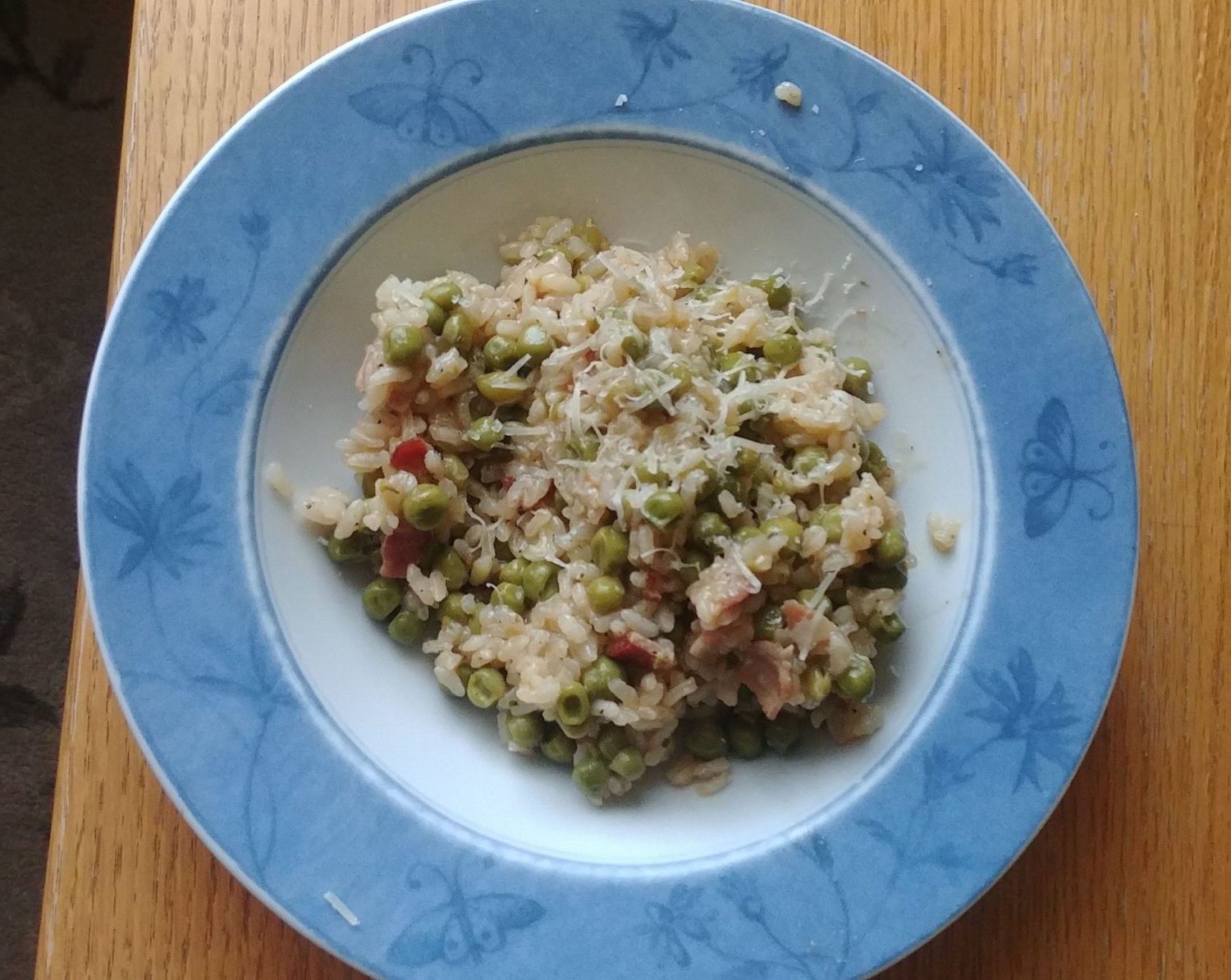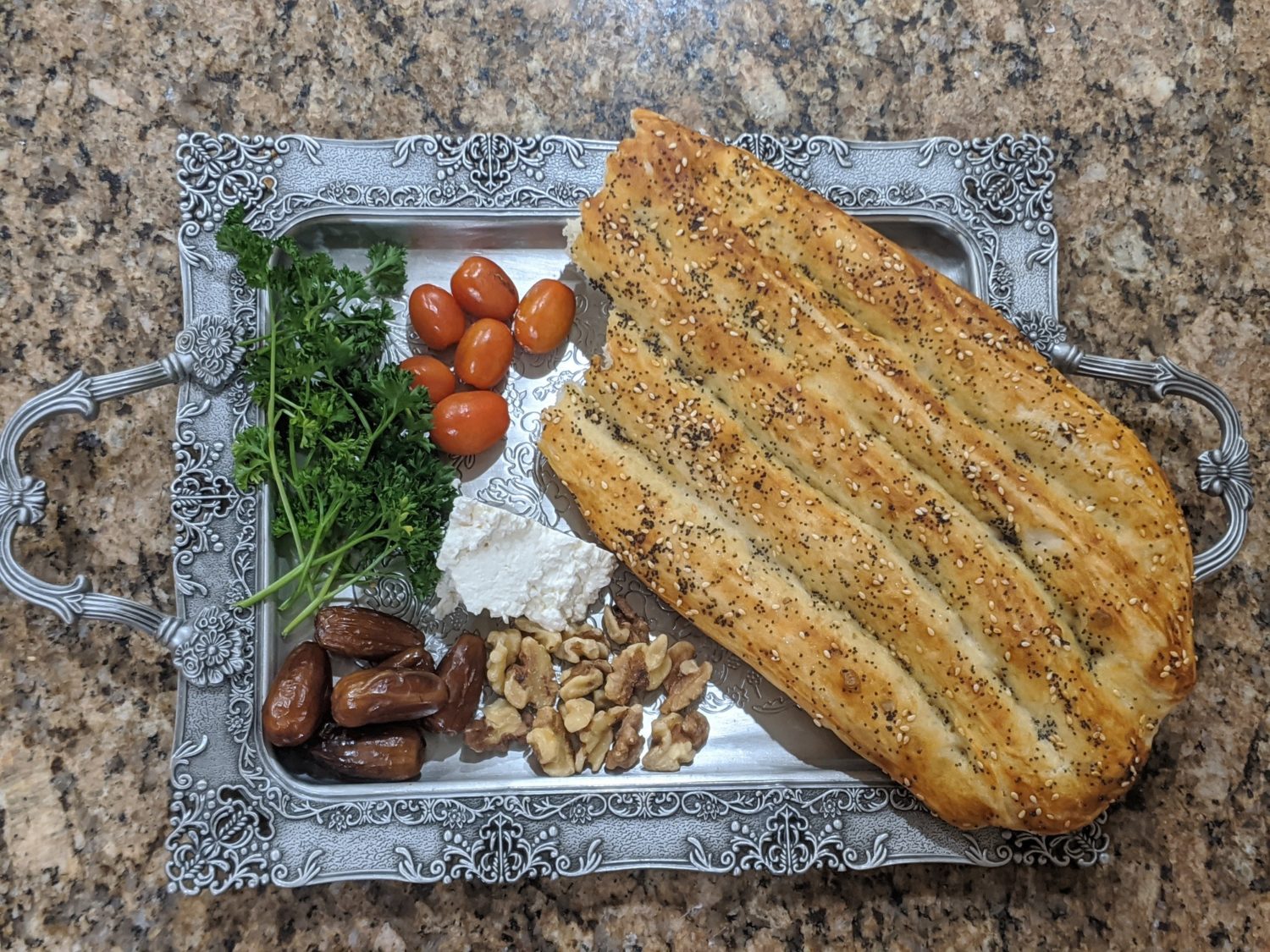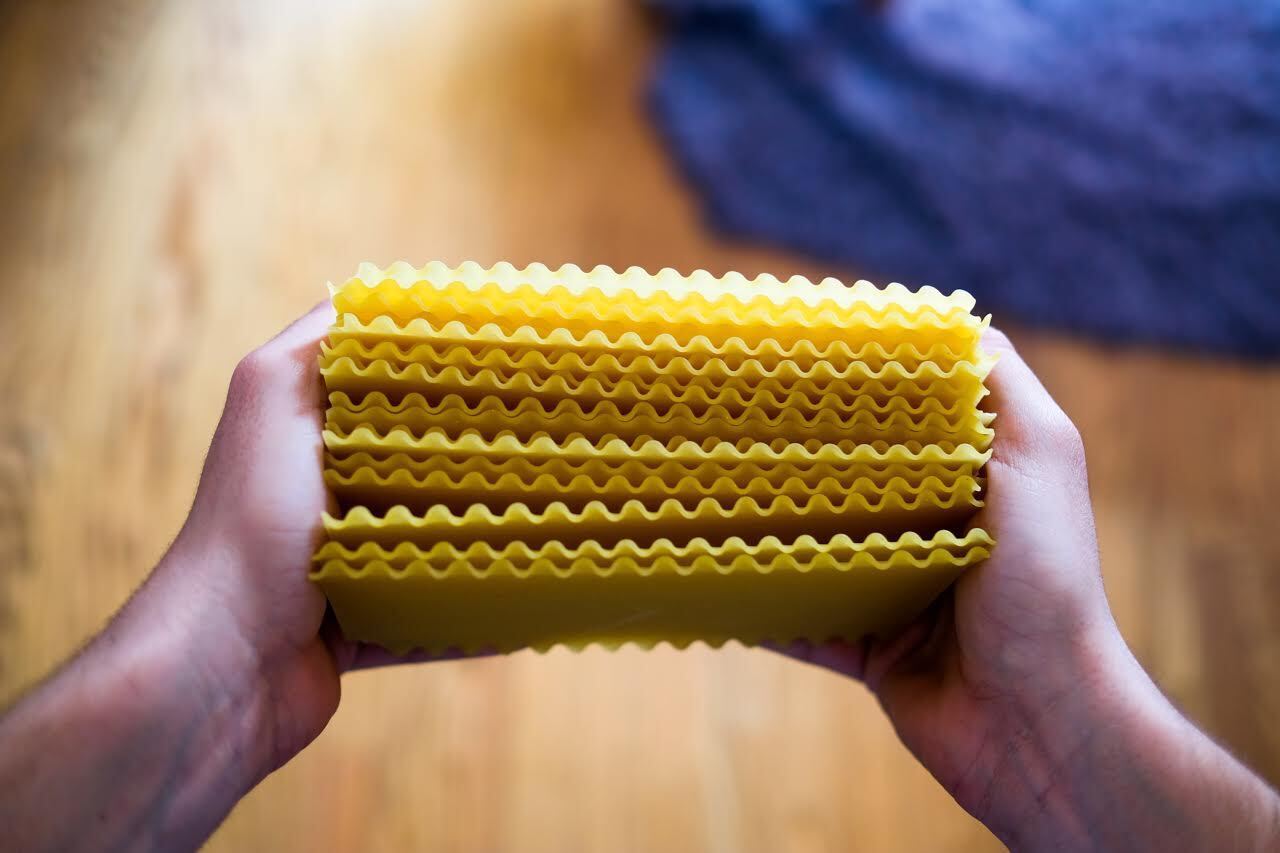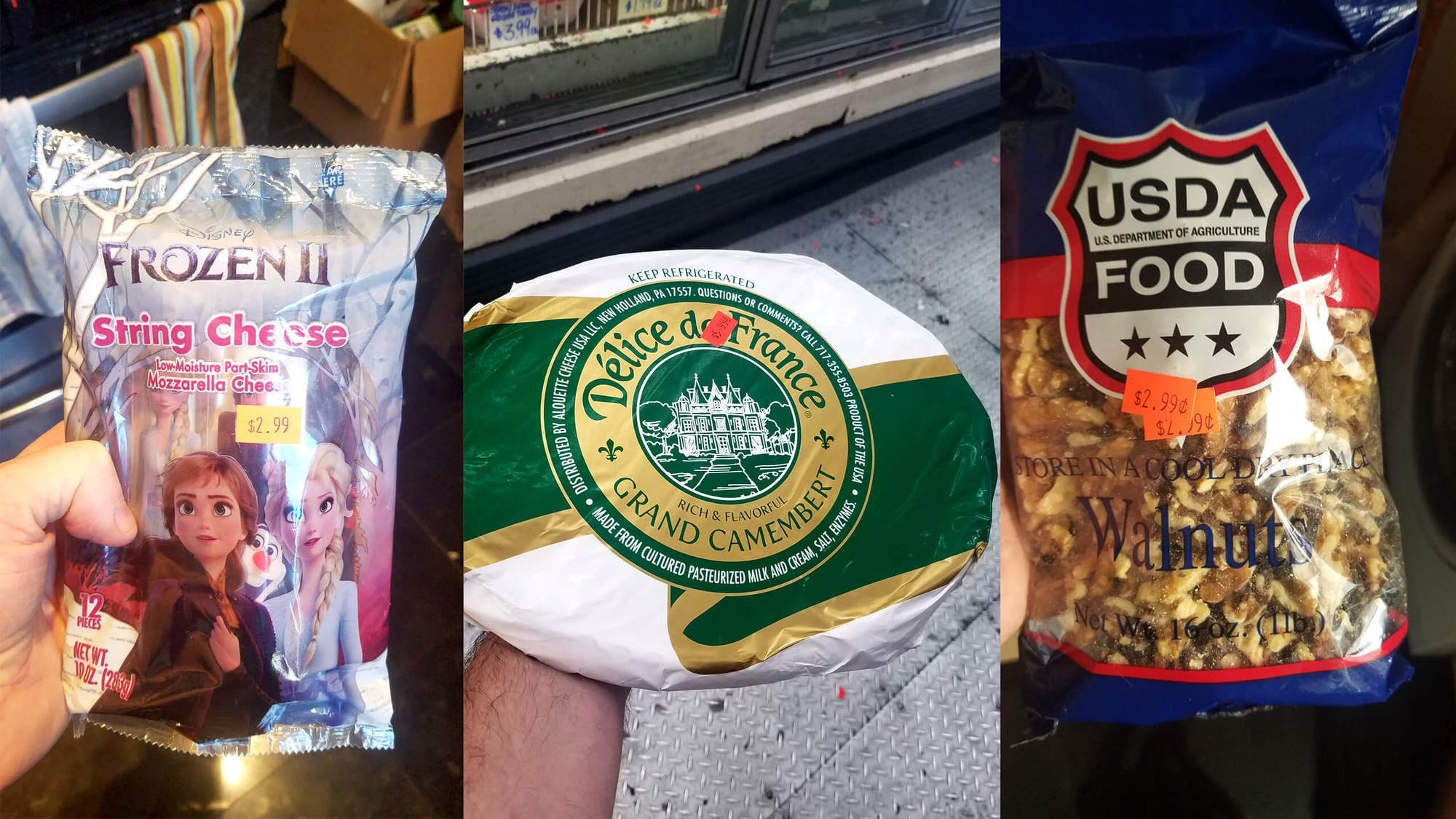
Jesse Hirsch
“It’s a glorious mashup of the posh, the highly processed, and everything in between.”
Since March, I have eaten upwards of 20 frozen cheeseburgers made by Cincinnati-based AdvancePierre Foods, a foodservice company boasting the inspirational slogan: “With the best microwaveable bread in the business, we set the standard for microwaveable sandwiches.” These sandwiches exist in the narrow niche I’d call “cheeseburgers sold at gas stations,” the kind you heat up in a crusty public microwave for one minute. Little gray meat puck, bright orange shiny cheese, sesame squish bun—not exactly “delicious,” per se, but there is a pleasant neutrality that allows me to customize with flair. Add some pickles, fancy mustard, jalapenos or whatever, and I’ve got myself a bespoke lockdown lunch.
“But, Jesse, it’s unlikely you live in a gas station!” you might be thinking. “How do you access such treasures in your home kitchen?”
Let me tell you about a little something called the “surplus grocer,” where nearly expired, lightly damaged, discontinued, and overstocked groceries find a home. Inside this tightly packed shop, roughly twice the size of a bodega, I’ve nabbed salted cashews, grass-fed beef, bags of key limes, Oatly, tinned fish from Denmark, bulk bags of buffalo wings, Hungry Man dinners, government walnuts, and Go-Gurt. It’s a glorious mashup of the posh, the highly processed, and everything in between.
Truth is, subjecting ourselves to this grocer’s random lottery is quite possibly my top source of joy and wonder during an objectively terrible year.
“You walk in with a rough idea of what you want or need, maybe some pasta or beans to fill a gap at home, but as soon as you get in there it’s a free-for-all,” says Ashley Chaifetz, a USDA research analyst who researched surplus grocery stores while completing her Ph.D. in public policy.
The exterior reads like a standard NYC dollar store: torn yellow awning bearing words like “Deals,” “Steals,” “Better Priced,” and “Happy”. The windows are thick with grime, mostly papered over with old Goya boxes. I never would have discovered it at all, were it not for the stream of heavy foot traffic, and the unmarked refrigerated trucks perpetually unloading in front. I peeked in one fateful day and my eyes went wide like a cartoon wolf.
[Subscribe to our 2x-weekly newsletter and never miss a story.]
Before the pandemic, I considered this store a novel treat, a whimsical outlet to supplement Manhattan’s mediocre grocery chains. My partner Abby and I would pop in randomly, grab some zany snacks and desserts, maybe a few frozen enchiladas for lazy weeknight dinners. Before we started working from home, I’d bring in oversized nacho Goldfish and off-brand Fig Newtons to The Counter office for my colleagues to hork down on deadline.
Now? It has become the primary food source for my household, as we are lucky enough to live on the same block. In that odd pandemic calculus we all make, we’ve concluded that the less we stray from our apartment’s immediate vicinity, the less ambient Covid germs will drift into our orbit (this is not science). But if I’m totally honest, it’s not just the proximity. Truth is, subjecting ourselves to this grocer’s random lottery—never knowing what treasures our fridge and freezer and pantry will be filled with—is quite possibly my top source of joy and wonder during an objectively terrible year (honorable mention to Abby and our dog).
It’s a communal store, precariously so. The aisles are narrow and jammed up with food, not necessarily in a way that makes sense. (Yesterday I informed a man who couldn’t find black pepper that they keep it behind the counter alongside the dental floss and the Godiva chocolate.) This physical closeness forces camaraderie, and also friction! I’ve bonded with at least 30 strangers this year: when we find something weird like gingerbread hummus or fermented pomegranate juice, or when a song comes on that we all like, or when we just want to marvel in our good fortune. Masks are mandatory, but spottily enforced (if you need one, they sell zebra print and hot rod masks from China). I’ve also seen several unexplainable shouting matches that nearly resulted in fistfights.
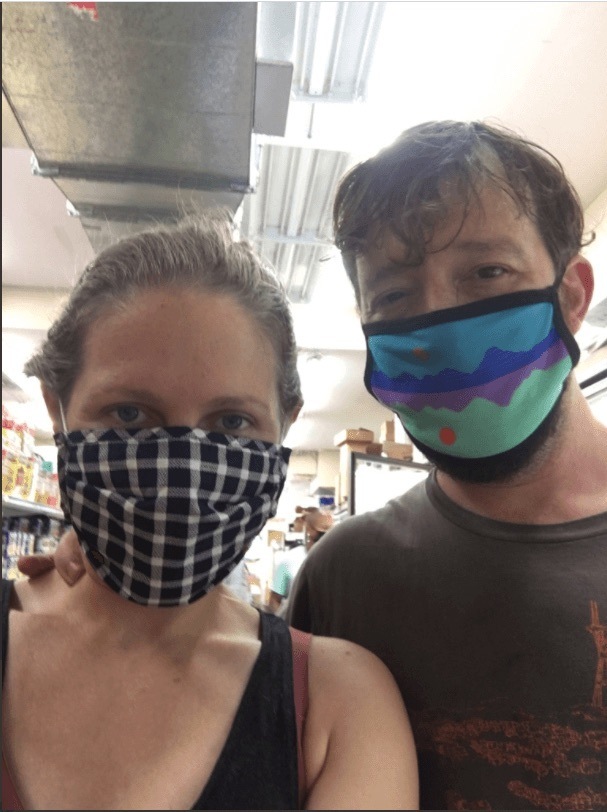
Abby Carney
Jesse with Abby inside the surplus grocer.
The shop is run by a group of roughly a dozen French-speaking African transplants, each quick with a wisecrack and smile. I’ve asked a few times about their sourcing, but my questions are treated like a toddler who’s trying to learn a magician’s tricks (sly wink and a, “Oh run along, you”). Still, the supply chain remains an object of intense interest: How do they end up with personal-size cups of shrimp-cocktail-to-go from a tiny seafood processor on the Gulf Coast of Georgia? How did they obtain five-pound bags of Totino’s pizza rolls packaged in stark, black-and-white bags that warn, “For foodservice only?” Where did they get five crates of fresh pineapples with weird, ragged plumage?
No matter. As NYC shuts down again and we brace for a long, hard winter, the surplus grocer will provide. Every two weeks we will cast our lot to the grocery Fates, an array of whatever misfit vittles end up in our little corner of East Harlem.
I don’t know what we’ll end up eating, or where it came from originally, but that’s okay. To quote one of my favorite twangy folk songs, “Think I’ll just let the mystery be.”
